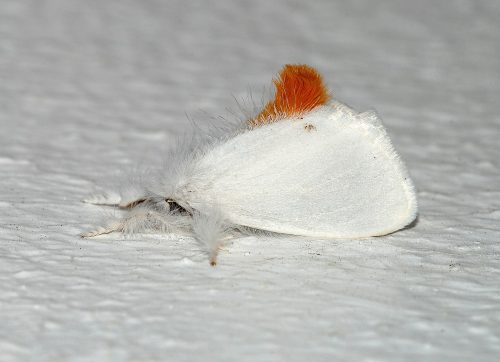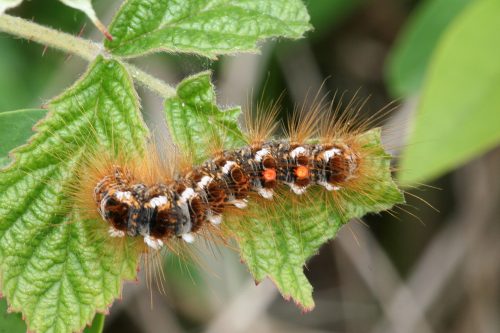Brown-tail moth, these three to four cm large moths belong to the tussock moths (Lymantriinae), a family in the superfamily Noctuoidea.
- The fine, urticating hairs of the caterpillar cannot be seen with the naked eye. Because of their barbs, these hairs easily penetrate the skin, eyes and respiratory tract, causing skin rashes (bumps and blisters) and severe itching. Late May and early June is the period when most disruption is experienced. Sometimes even in August when the butterfly emerges with hairs in its wake. The toxins in the hairs remain potent for up to three years. Most of the fine, urticating hairs are spread by the wind.
Brown-tail moth (Euproctis chrysorrhoea). These three to four cm large moths belong to the tussock moths (Lymantriinae), a family in the superfamily Noctuoidea. These moths are found in Europe and North Africa, among other places. In England, these moths are mainly found in the south and Wales and in some coastal areas further north. The butterfly is white with a reddish-brown body. The larva (caterpillar) is initially very small (0.5 cm long and wafer-thin) and later grows into a caterpillar of two to three centimeters.
In summer, the female lays eggs on hawthorn, blackthorn, plum, cherry, sea buckthorn, rose and blackberry, the host plants of this butterfly. In late summer, the eggs hatch and the larvae (caterpillars) construct tough, silken tents – hibernacula – in shrubs mainly in the rose family (Rosaceae). The caterpillars overwinter in the silken tents. In the spring when the young leaves appear, the tiny caterpillars emerge and feed on the foliage.
In early spring the growing caterpillars leave the tents and eat the nearby food plants bare. The adult caterpillars pupate in early summer; usually near the host plant. Fortunately, the bare bushes simply sprout again during the season.
Affected plants
- Sea Buckthorn
- Hawthorn
- Blackberry
- Blackthorn
- Plum
- Cherry
- Rose
- Oak
Control
A single silken tent in a fruit tree can be easily removed – wear gloves. In the ornamental garden (hawthorn, blackthorn) it can also be done, but is not necessary. However, those who are sensitive to the toxic hairs would be wise to remove the silken tents containing caterpillars.


